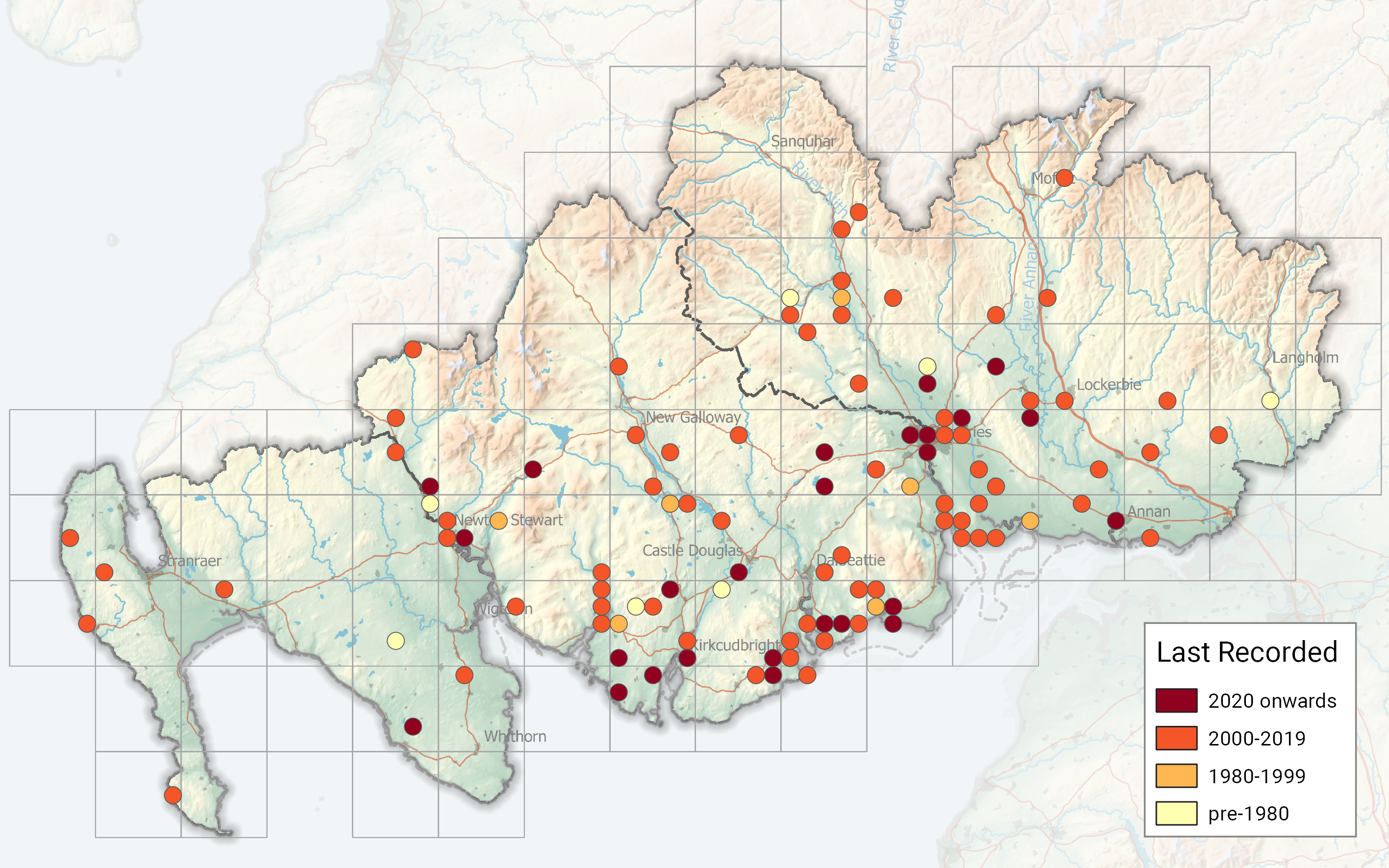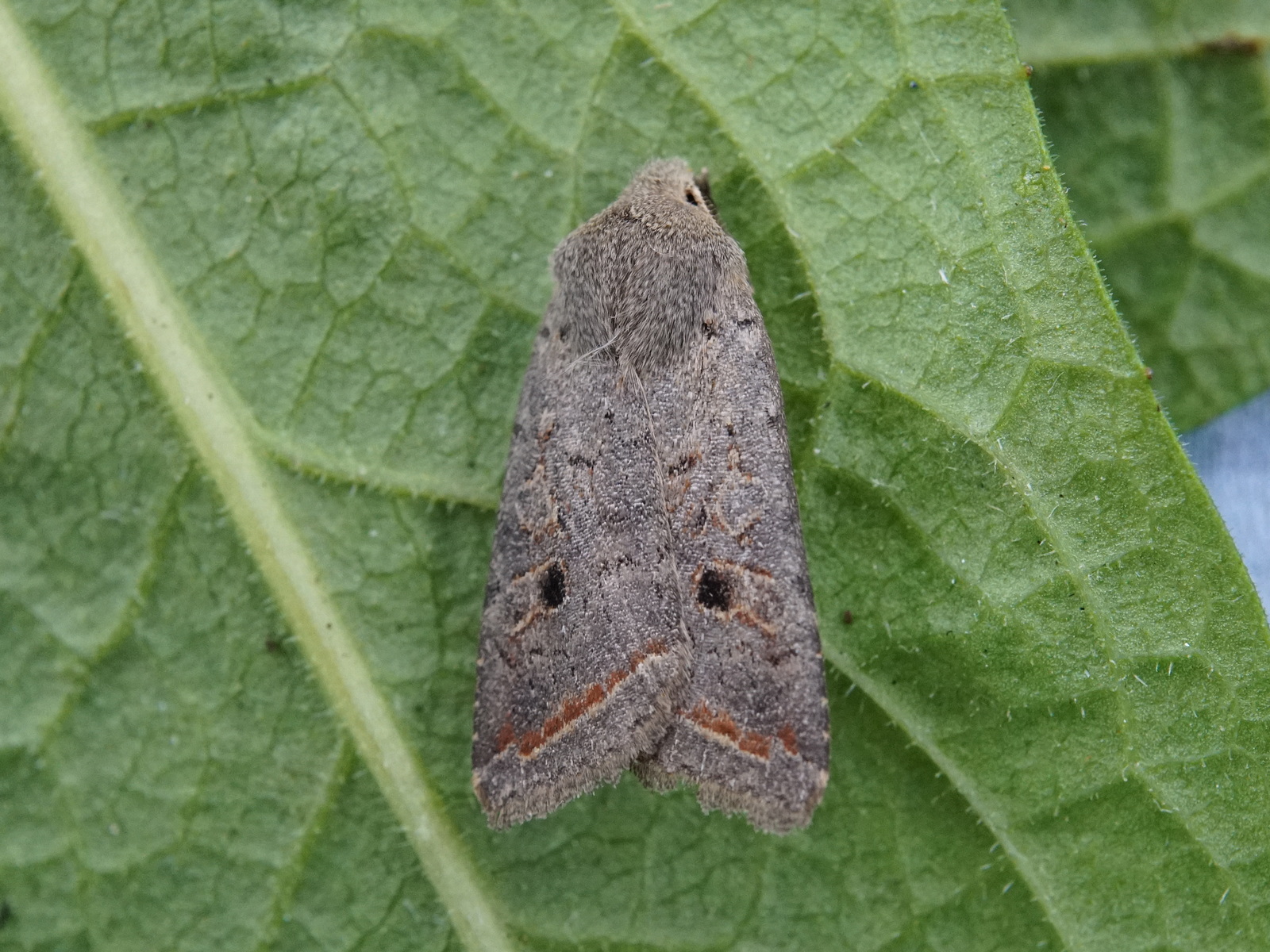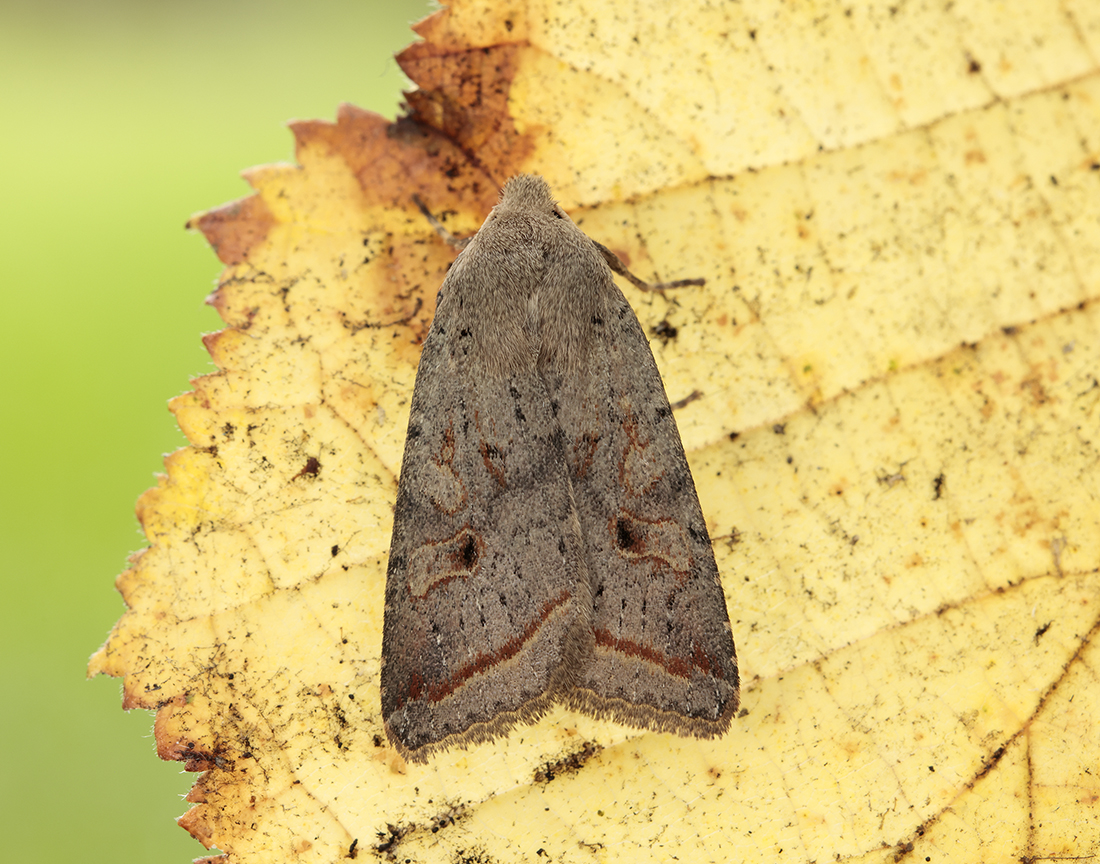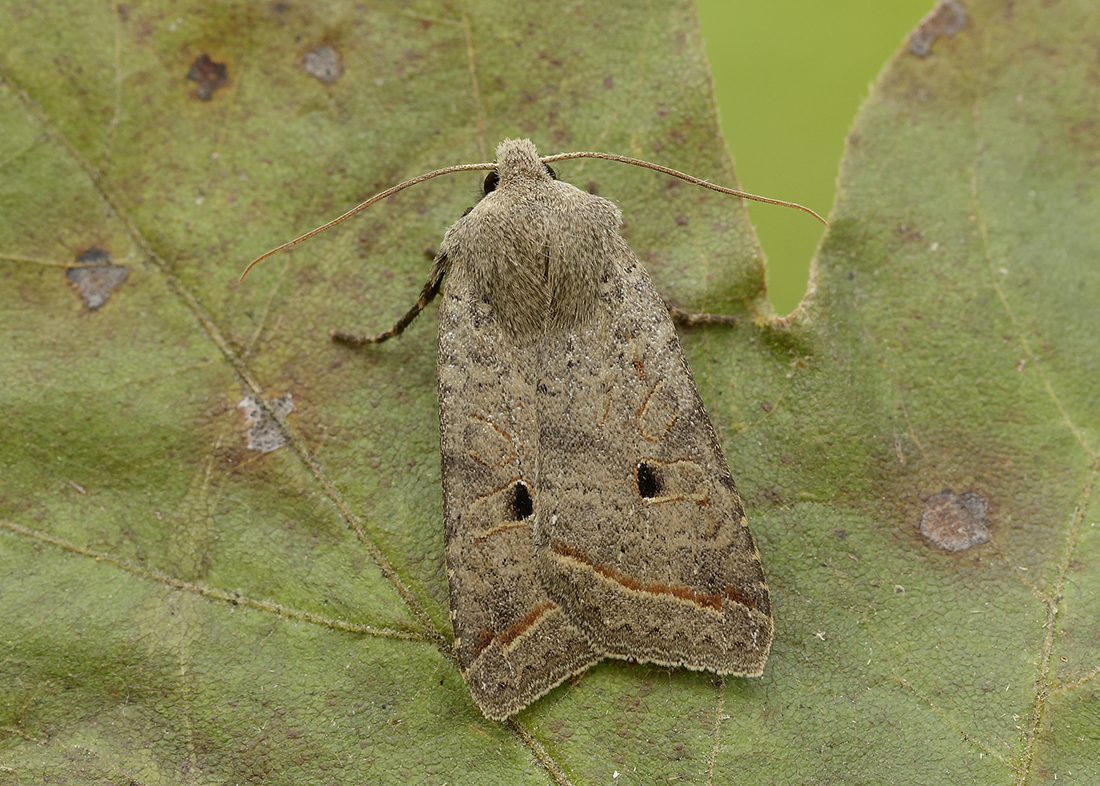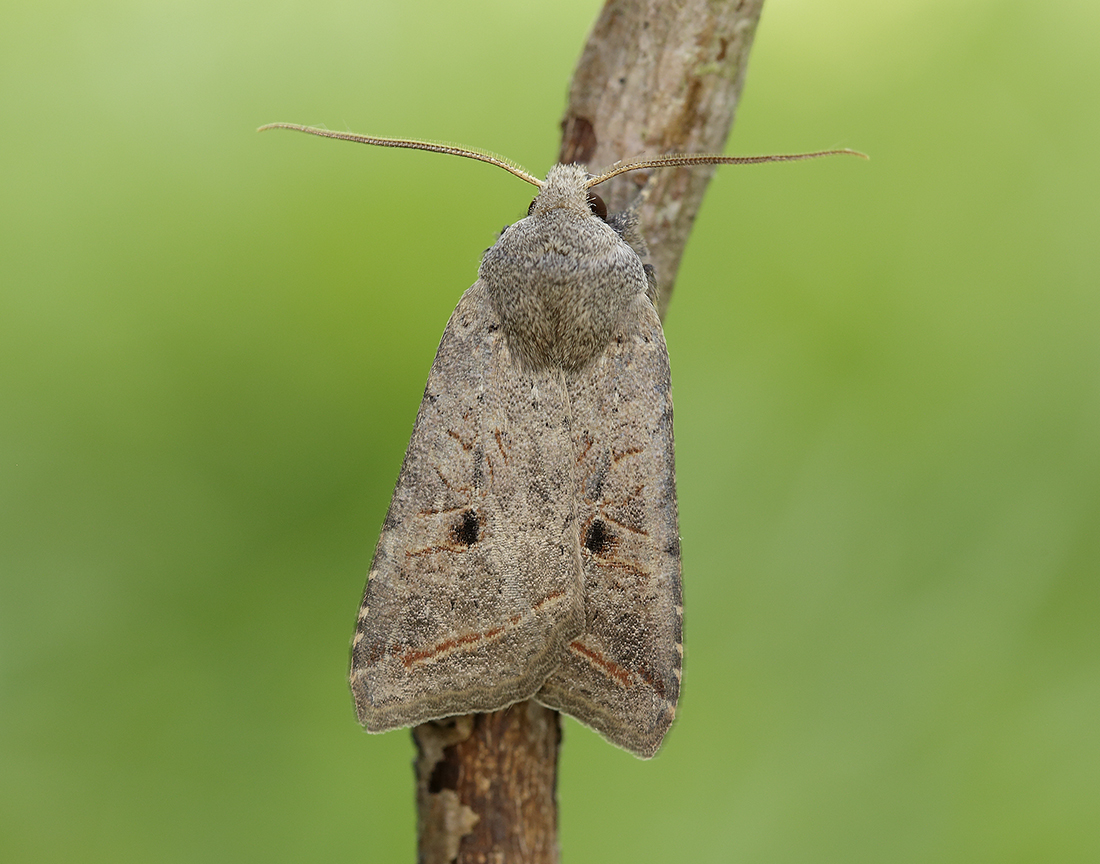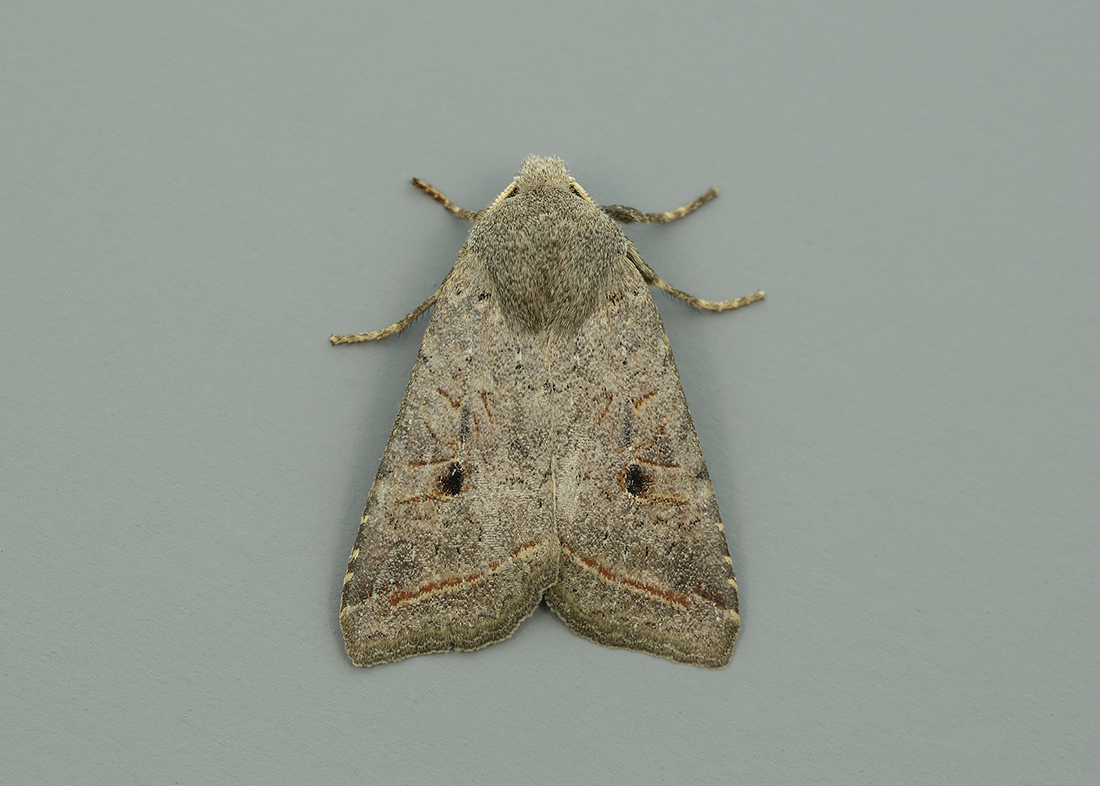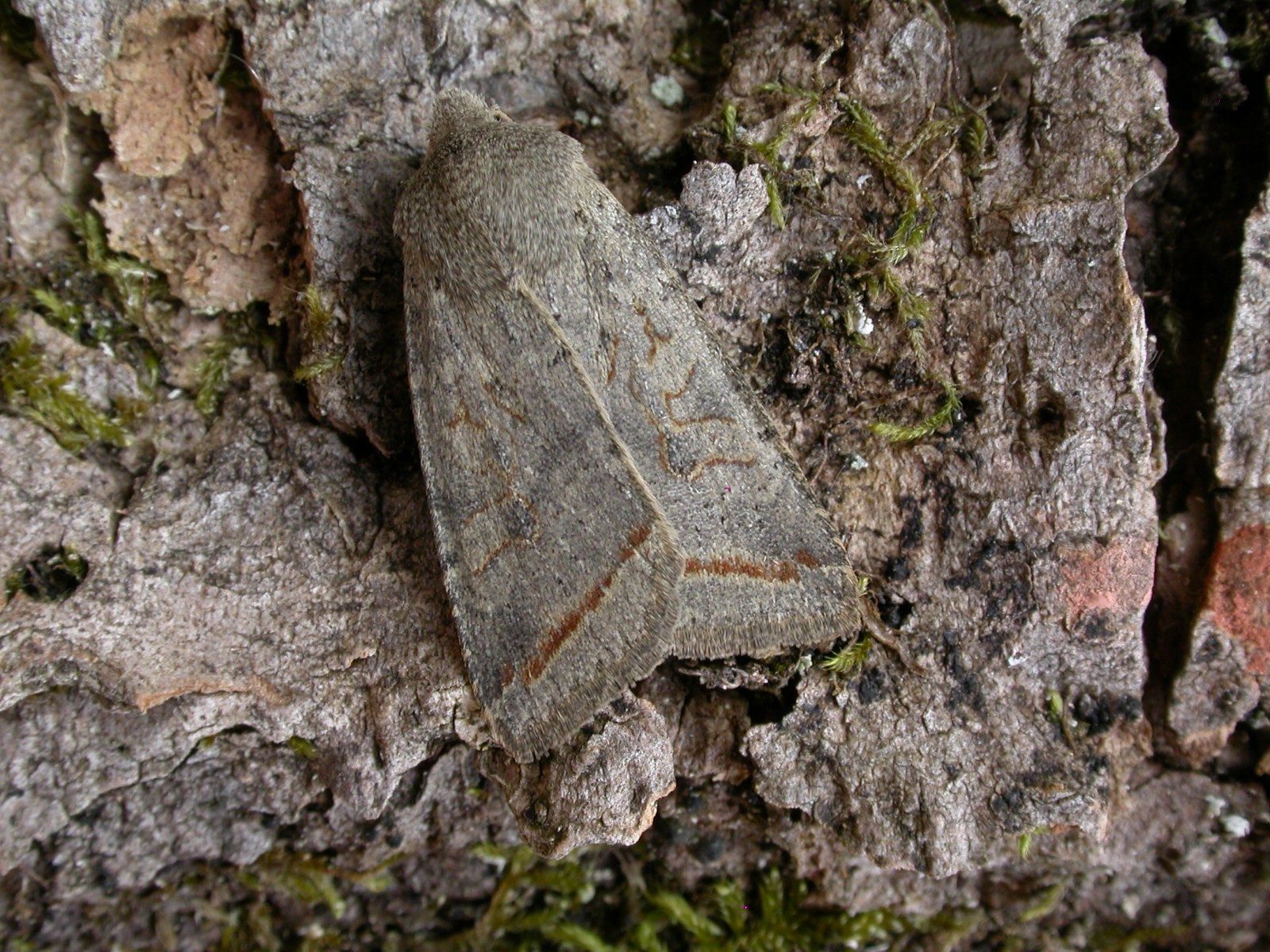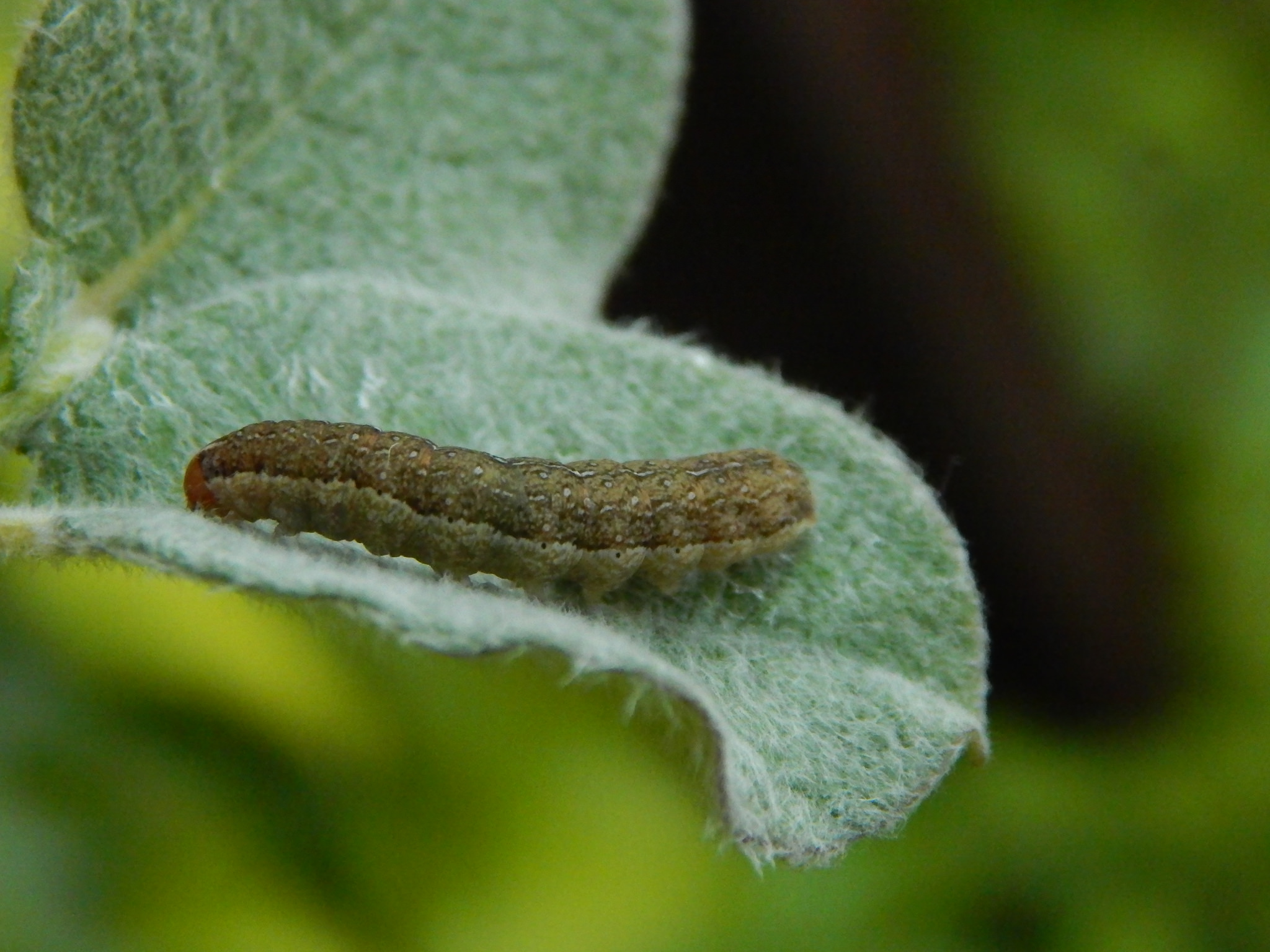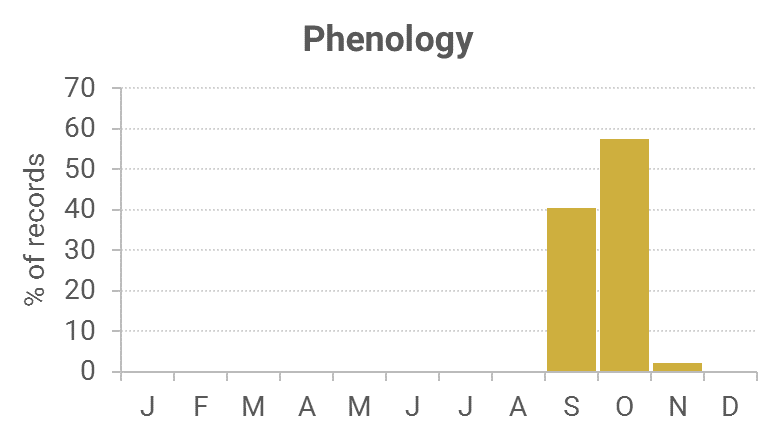Identification
Greyish forewing with the outermost cross-line reddish brown, edged with yellow is distinctive.
Recording Method.
Attracted to light, also comes to sugar and flowers.
Life cycle
One generation. Overwinters as a single egg laid on the foodplant. Larvae are present April to early June, with pupation about six weeks later from an underground cocoon.
Larval foodplants
Larvae feed on Rough-leaved Willow and Small-leaved Willow leaves and catkins.
Habitat
Marshes, fens, gardens, heathland, hedgerows and woodland rides.
History
Lennon (1863) had stated it to be common everywhere around the Dumfries area. Gordon (1913) had found it to be common some years, coming to sugar in the woods at Corsemalzie, Wigtownshire, in September.
Archibald Russell (1944) listed it as occurring near Gatehouse of Fleet (VC73) during the years 1942-43. Sir Arthur Duncan (1909-84) during his lifetime had found it at Closeburn, Tynron and Castlehill, Dumfries (all VC72).
During 1974-90 there were a hundred records from all seven Rothamsted stations.
From 1992 to 2010 the regular trapped sites at Kirkton, Durisdeer, Mersehead RSPB, Cally Woods, Milton and Kirkton provided most of the 250 records, with other records from scattered sites across the region.

